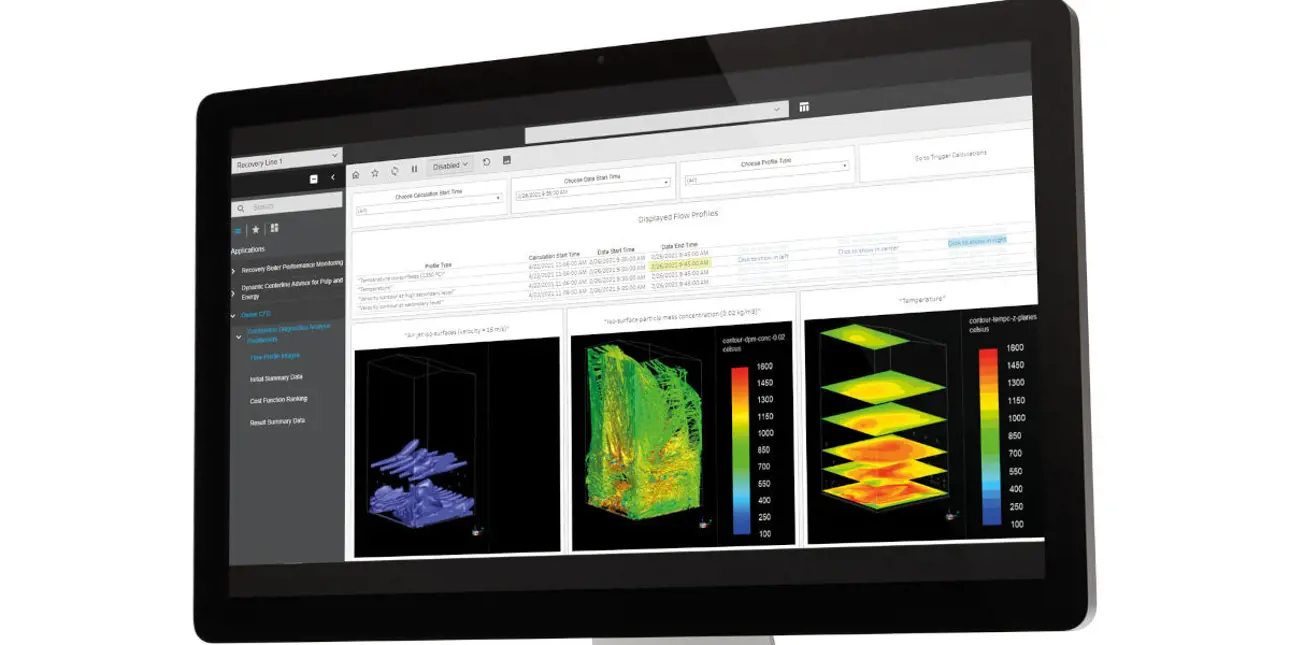A new tool for recovery performance optimization – Valmet Recovery Boiler Combustion Diagnostics
Aug 8, 2023
Several challenges arise in recovery boiler performance optimization – the overall target is to increase availability, optimize chemical recovery efficiency and improve emission control. At the same time, operational safety cannot be compromised.

If the recovery boiler is not in operation, the entire production at a mill stops. To maximize availability, the mill should aim for the longest possible time between cleaning shutdowns and eliminate completely unplanned outages.
Simulations provide information that cannot be obtained from measurements.
Jarmo Mansikkasalo, Senior Manager, Recovery Boiler Solutions at Valmet, explains: “The reduction rate – the chemical recovery efficiency – has a major influence on a mill’s overall effectiveness and operating costs. The recovery boiler is also a source of potential safety hazards. Carryover promotes superheater tube corrosion and increases fouling in the superheater area. This can lead to tube leaks – and in the worst case, an explosion can occur. And in many countries, emission limits are getting stricter, especially for NOx gases.”
 |
Jarmo Mansikkasalo, Senior Manager, Recovery Boiler Solutions at Valmet. |
Simulations provide new information
“On the other hand, there are limited ways to measure boiler operation. For example, some aspects can be evaluated by measuring the reduction rate and the green liquor’s Total Titratable Alkali (TTA). But now, with Valmet Recovery Boiler Combustion Diagnostics, we can get information about boiler operation that is unavailable with normal measuring methods,” Mansikkasalo says.

The Valmet Recovery Boiler Combustion Diagnostics application utilizes Computational Fluid Dynamics (CFD) to simulate and visualize the state of the combustion inside the furnace. The application calculates a variety of process parameters which are impossible to measure in practice, using them to provide very valuable information about how the combustion process is actually happening. This information enables operators to make decisions about how to improve the current situation and optimize performance, availability and emissions.
The Valmet Recovery Boiler Combustion Diagnostics application provides valuable information about how the combustion process is actually happening.

A recovery boiler is a critical part in the chemical pulp production process in both recovering cooking chemicals and producing energy from black liquor.
“The application allows mill operators to trigger a physics-based simulation of the current boiler operation or to simulate how the boiler was behaving at a specific point in the actual control history. This enables the customer to investigate, understand and iron out the potential root causes of process anomalies and assess how the combustion process can be fine-tuned in the future. For example, the diagnostics tool visualizes process parameters such as temperature fields, flow patterns, and black liquor droplet trajectories showing droplet hits on furnace walls, or how droplets escape the furnace, resulting in carryover. All these parameters are very difficult to measure with other methods,” Mansikkasalo explains.
Proven benefits for operation and safety
The Recovery Boiler Combustion Diagnostics application has been used to simulate pulp mill recovery boiler performance since 2021, and it has proven beneficial for finding the right solutions for recovery boiler performance optimization.


The Valmet Recovery Boiler Combustion Diagnostics application provides valuable information about how the combustion process is actually happening.
A key area for optimization is the availability of a recovery boiler, and the application’s CFD modeling capabilities make it possible to find the optimal operation mode to minimize carryover. In turn, this minimizes superheater fouling and improves the availability and safety of operations.
Valmet Recovery Boiler Combustion Diagnostics helps operators achieve the most competitive boiler operation.
Finding the optimal combustion air split and black liquor firing temperature balance for a high reduction rate is also a common challenge in many recovery boilers. To achieve the optimal droplet size and air distribution, the application provides key information about issues like temperature and oxygen profiles close to the char bed, and how black liquor droplets end up on the char bed.

The boiler operation can be evaluated by measuring reduction rate and green liquor’s Total Titratable Alkali (TTA). The Valmet Recovery Boiler Combustion Diagnostics application can be used to get information about the boiler operation which is not available by normal measuring means.
When the combustion process is optimized, the recovery boiler operates with minimal carbon monoxide (CO) emissions. This enables the boiler to operate with a lower oxygen content, which also means NOx emissions can be reduced.
Although each recovery boiler has slightly different demands, with Valmet Recovery Boiler Combustion Diagnostics, operators can now optimize their recovery boiler performance and achieve the most competitive boiler operation.
Text Lotta Forssell


